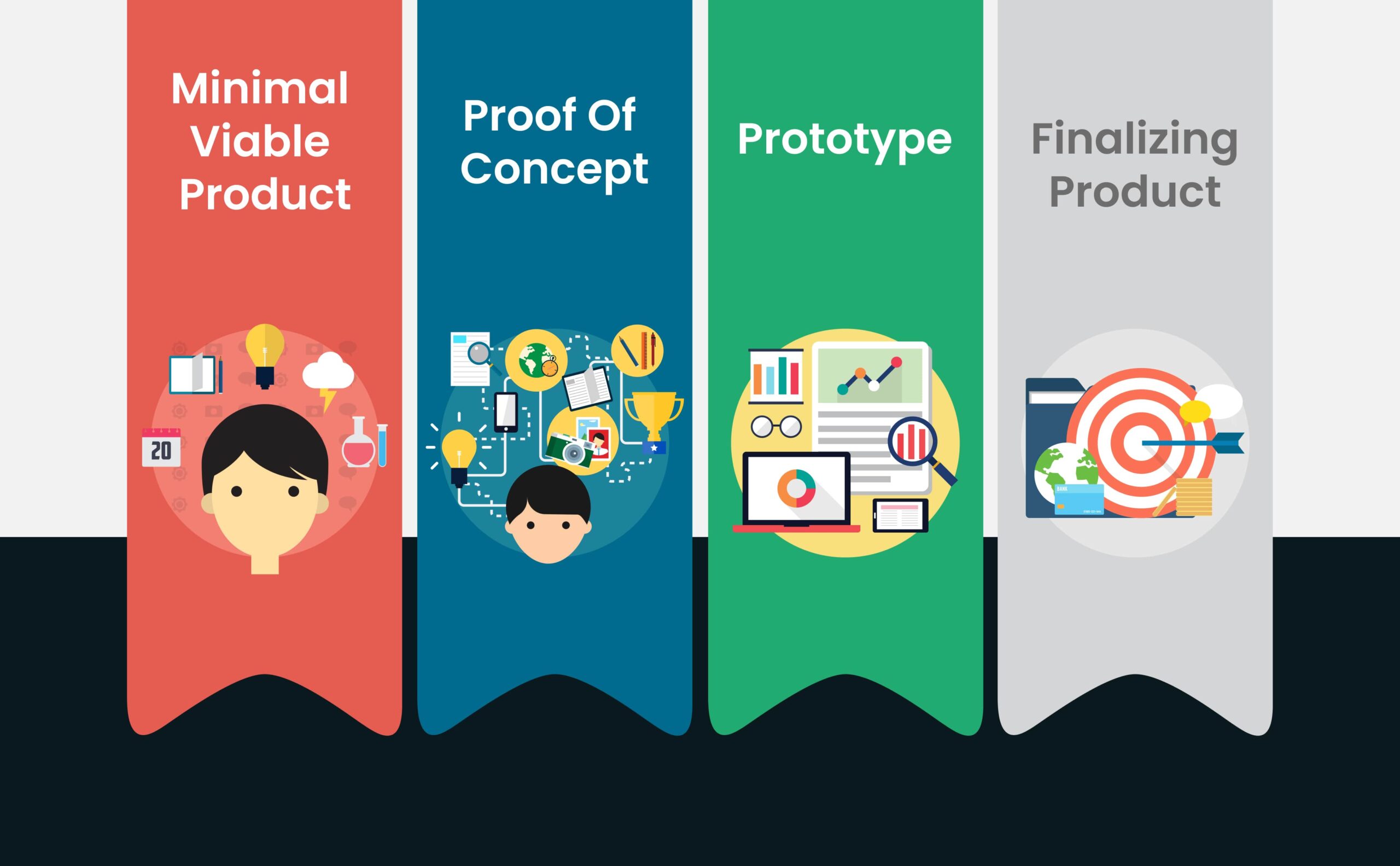The Minimum Viable Product (MVP) is regarded as the most important and critical stage in the software development process. Project goals and conditional expectations are common in software businesses. All of this, however, remains theory in relation to comparing competing products until it is made transparent and supported by actual data, at which point MVP comes into play.
The MVP enables a comprehensive market test of the product in its most basic form. You’ll be able to experiment, test, and understand how your product affects your target market. It assists in gauging user interaction while putting a premium on their needs and wants in the long run. It mainly gives a clear indication of the product’s strengths and weaknesses, as well as what can be added or removed and, most importantly, how it can be improved. MVP has always been essential in agile development because the agile methodology is based on validating and iterating products based on user feedback. MVP specifically guides product development and, in the end, clarifies product vision.
What Is The Purpose Behind Choosing MVP?
A company may decide to create and release a minimum viable product because the product team wishes to:
- Release a product as soon as possible to the market.
- Before committing a large budget to the full development of a product, test it with real users.
- Learn what resonates with the company’s target market and what doesn’t. An MVP can help your company reduce the time and resources you might otherwise commit to building a product that won’t succeed.
The Benefits of Building an MVP for Software Development:
MVP is a product management concept that works extremely well when launching a new product. The primary goal of MVP is to provide the bare functionality that will meet the users’ essential needs and effectively solve a specific problem. This approach has numerous advantages, including cost efficiency, reduced risks, product clarity, and others mentioned in the article.
- Concentrate on Core Functionalities:
The MVP method aids in gaining clarity and focusing on the core functionality of your product. It enables you to test your business concept at a low cost and in a short period of time. Before the product even hits the market, the majority of product owners are prone to adding redundant functionality. When you add a lot of functionality, it’s easy to lose sight of the specific problem you’re trying to solve.
- Vision Clarity:
During the early stages of product development, you should specify the core features and customer value of the software and document everything. Share the checklist with the team once it has been created. This overarching vision will undoubtedly assist you in staying on track and making better decisions in the long run.
- Establishing Early Customer Relationships:
In business, timing is extremely important. It aids in the initial engagement of new users and stakeholders in the development process. Early adopters will help spread the word about your product and provide invaluable feedback. What could be better for making your product completely customer-focused?
- A better understanding of the needs of the customer:
The importance of collecting data and detailed research on the target audience cannot be overstated. Early adopter feedback is far more valuable than the best assumptions of business analytics and experienced advisers. The sooner a client can test the product, the better the development will be. Your users will tell you which features they value the most, which they value the least, and which you should include in the next release.
- Simple User Interface:
The MVP method keeps your initial product from becoming cluttered with unnecessary features. As a result, the product is simple to use and easy to adopt. This is also an excellent opportunity to experiment with various features. You don’t have to keep track of everything if you investigate each one separately.
- Faster Release:
The decision to develop only core functionality has significantly accelerated the product’s release. After releasing the first version of your product, you can quickly test key hypotheses and gather user feedback on both core and desired features. Procrastinating on the release date can result in the development of ineffective features and the waste of time on costly bug fixes. Someone will always be able to release the same good app before you. Make every effort to keep your initial release as small as possible, and subsequent releases incremental. It will make you much more market-responsive.
- Adaptability and Constant Updating:
The ability to be exceptionally responsive to the needs of today’s fast-paced market is the next advantage of developing an MVP. The MVP approach makes room for updates and new features requested by customers. Additionally, as newer technology and tools become available, your product may benefit. It will assist you in maintaining the product’s relevance in a competitive market.
- Development with Low Risk:
It’s critical to remember that polished, large-scale apps take years to create and require a lot of money, time, and effort. All of the most widely used and popular software products began small and gradually added costly and extensive features over time. Facebook, Instagram, Snapchat, Spotify, Airbnb, Uber, Zappos, Dropbox, and other companies began as MVPs.
The Bottom Line:
We strongly advise considering an MVP when entering the market with a new idea to save time, money, and resources.
At Zenkoders, we have experience in developing MVPs for a wide range of projects. If you’re thinking about creating an MVP or have any questions about how to create your minimum viable product, please fill out the contact form.



